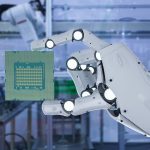Technology and automation underline industrial advancements in North America, reshaping various sectors. The steady demand for robotic units in the first quarter of 2025, as reported by the Association for Advancing Automation (A3), indicates a persistent investment in automation despite economic uncertainties. As industries adapt to evolving technological needs, the distinction between sectors embracing innovation and those maintaining traditional methods becomes pronounced.
Earlier reports showed a similar trend in robot orders, with minimal but noteworthy changes over the years. In 2024, there was a modest increase in demand, contrasting with peak records set in 2022. The automotive sector, consistently a major robotics consumer, regained prominence as a key driver of growth in 2025, even as other industries experienced contractions. While previous years saw the food and consumer goods sector surging, now automotive manufacturers are leading acquisition rates.
What Drives Current Investment Trends?
In Q1 2025, companies in North America purchased 9,064 robotic units amounting to $580.7 million, slightly improving on previous figures. When compared to Q1 2024, the number of units ordered increased by 0.4%, and the order value saw a significant 15% hike. The automotive industry‘s robust adoption rates have notably fueled these statistics. Automotive firms ordered 3,668 units at a value of $263 million, marking a 42% and 78% rise in units and revenue respectively compared to Q1 2024.
Which Sectors Face Declines?
While automotive companies amplify their automation efforts, other sectors report declines as reflected in the recent data. Non-automotive sectors like food, consumer goods, metals, and semiconductors showed year-over-year decreases. Plastic and rubber industries bucked this trend, showing a 12% increase in unit orders and a 33% rise in order value. Such disparities suggest differing levels of adaptability and changing strategic priorities among industries.
How Do Collaborative Robots Figure into These Trends?
A3’s introduction of collaborative robot (cobot) statistics offers a new perspective on robotic integration trends. In Q1 2025, businesses ordered 1,052 cobots worth $39.2 million, signaling demand for flexible and safe automation processes. Cobots capture 11.6% of total robot orders, especially in sectors like life sciences and consumer goods. Universal Robots plays a role in this trend with the release of their UR15 model, which features high-speed operations to enhance productivity.
Advancements in robotics technology continue to shape North American industries, with automotive manufacturing reinforcing its status. The divergence in sector-specific demands signal complexities in economic environments and the pivotal role of strategic investments. The rising adoption of cobots illustrates a shift towards collaborative work environments, accommodating both flexibility and safety in automation. These developments suggest a cautiously optimistic outlook for automation despite varied industry responses.










